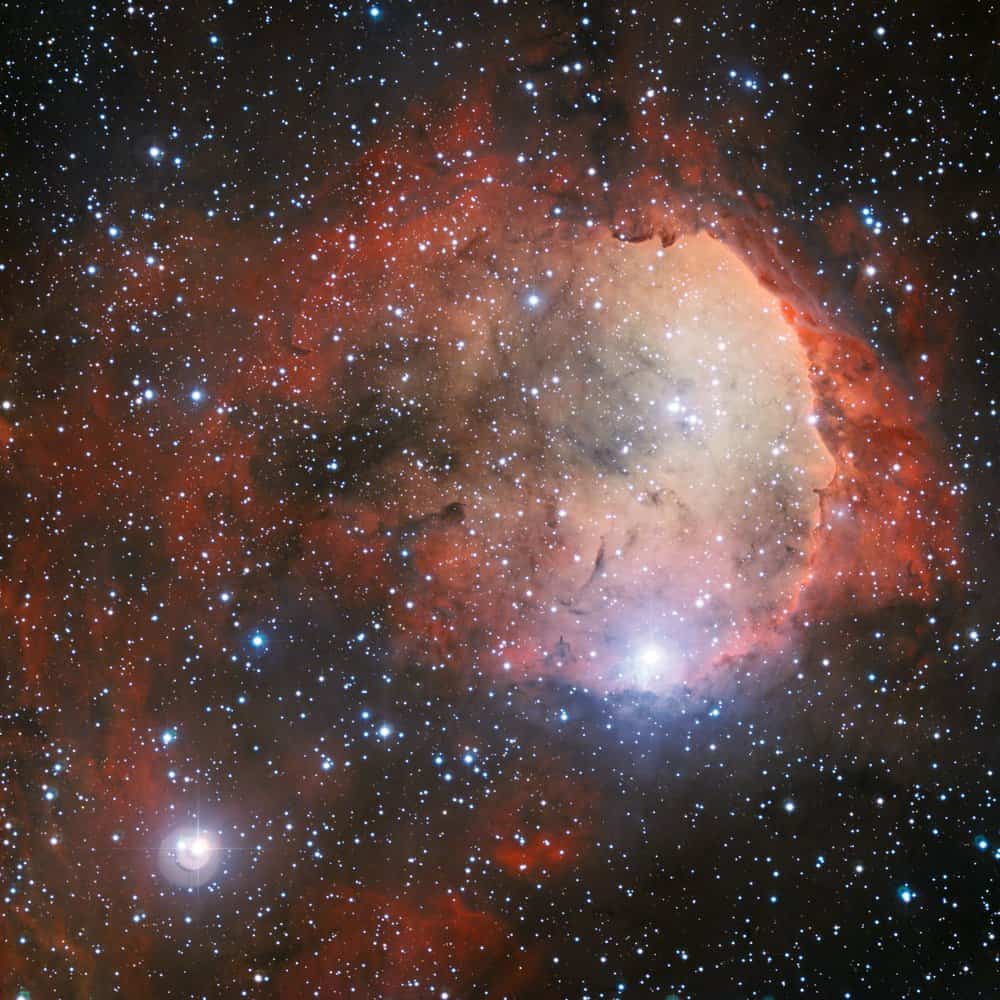The Cosmos with NGC 3324
The Wide Field Imager on the MPG/ESO 2.2-metre telescope at the La Silla Observatory has imaged a region of star formation called NGC 3324. The intense radiation from several of NGC 3324’s massive, blue-white stars has carved out a cavity in the surrounding gas and dust. The ultraviolet radiation from these young hot stars also cause the gas cloud to glow in rich colours.
NGC 3324 is an open cluster in the southern constellation Carina, located northwest of the Carina Nebula (NGC 3372) at a distance of 7,560 ly(2,317 pc) from Earth. It is closely associated with the emission nebula IC 2599, also known as Gum 31. The two are often confused as a single object, and together have been nicknamed the “Gabriela Mistral Nebula” due to its resemblance to the Chilean poet. NGC 3324 was first catalogued by James Dunlop in 1826.

The Wide Field Imager on the MPG/ESO 2.2-metre telescope at the La Silla Observatory has imaged a region of star formation called NGC 3324. The intense radiation from several of NGC 3324’s massive, blue-white stars has carved out a cavity in the surrounding gas and dust. The ultraviolet radiation from these young hot stars also cause the gas cloud to glow in rich colours.